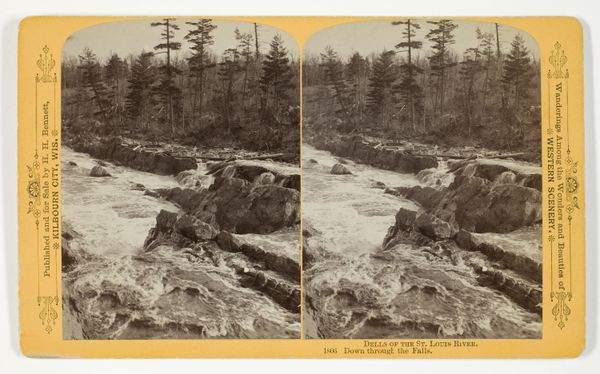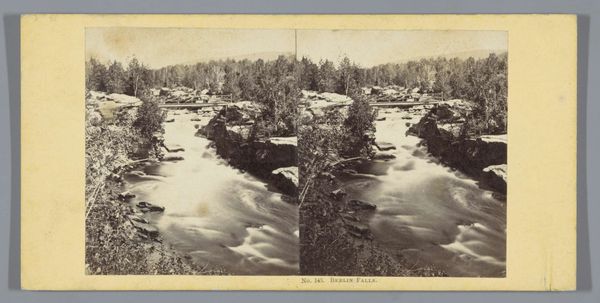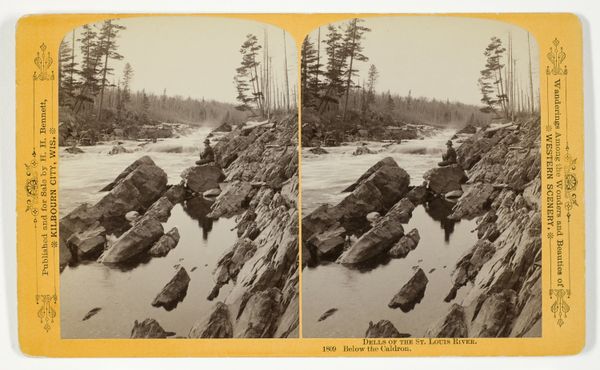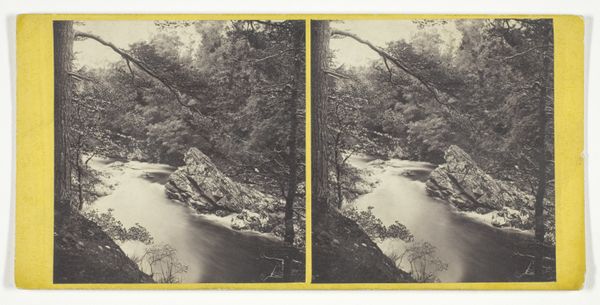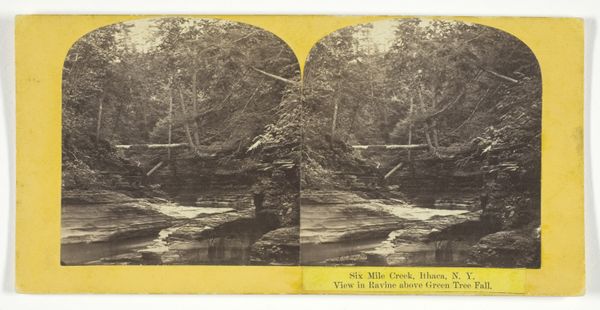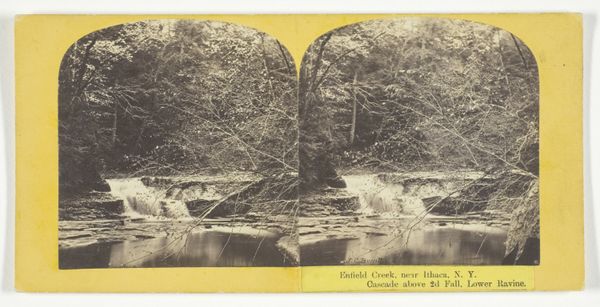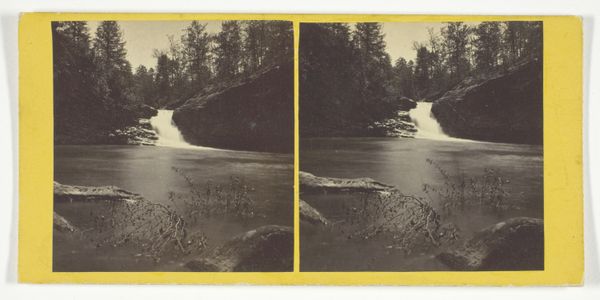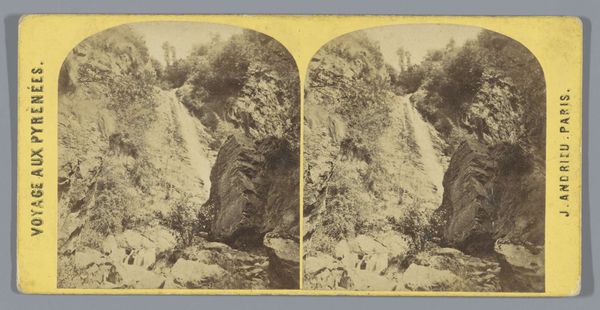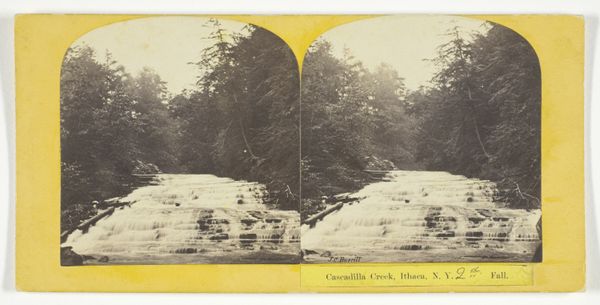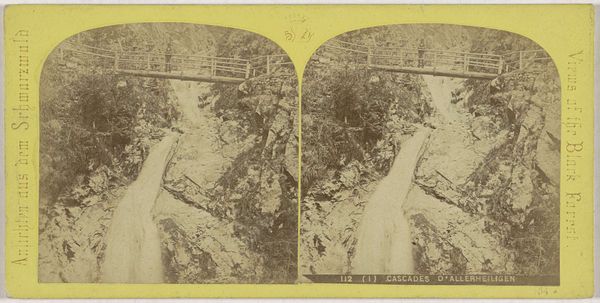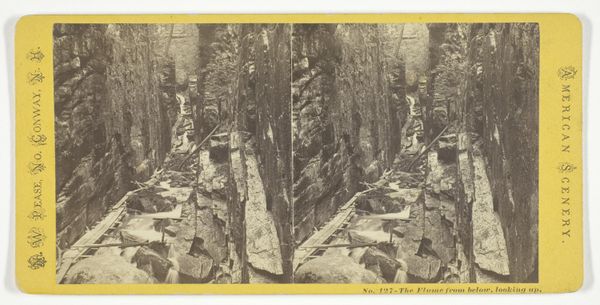
print, photography, gelatin-silver-print
#
pictorialism
# print
#
landscape
#
photography
#
gelatin-silver-print
Dimensions: 10 × 8.4 cm (each image); 10.7 × 17.7 cm (card)
Copyright: Public Domain
Editor: This is "At the Head of the Falls above Thompson," a gelatin-silver print from 1889 by Henry Hamilton Bennett. There's a certain romantic quality to it, almost dreamlike, despite depicting a rugged scene. How do you read it? Curator: What immediately strikes me is the deliberate blurring of motion. Consider how water, a symbol of purification and flow, is rendered here. Notice the contrast of water and wood. The trees seem to be felled violently by ax, an instrument, like waterwheels and dams, by which humans conquer nature. What might this tension tell us about the symbolic relationship between humanity and nature at the end of the 19th century? Editor: That's an interesting point. I was focusing on the aesthetic appeal, but I see what you mean about this tension. The logs look almost violently placed. It's not just a serene landscape; there's a kind of struggle present. Curator: Precisely! This conflict is central to the American identity itself – the conquering of the wilderness, progress at what cost? Does this image trigger anything else for you? Perhaps something you might already know about depictions of the 'American West'? Editor: Now that you mention it, there's almost a mythologizing here. The dramatic falls and the stark trees...it reminds me of those grandiose landscape paintings meant to inspire awe and patriotism. Is it the same intention here? Curator: Potentially, but with a stark difference. Bennett also shows the effect that mankind had. The photograph, in a way, freezes the action. The stillness of this industrial impact, rendered beautiful yet sobering, carries an inherent commentary, doesn’t it? Editor: I suppose so. So, even through seemingly simple imagery, this photo really captures conflicting themes – reverence and exploitation, progress and destruction – that defined the time. Curator: And that visual paradox continues to inform our perception of nature today. Visual imagery becomes the key to shared, and contested, memories.
Comments
No comments
Be the first to comment and join the conversation on the ultimate creative platform.
